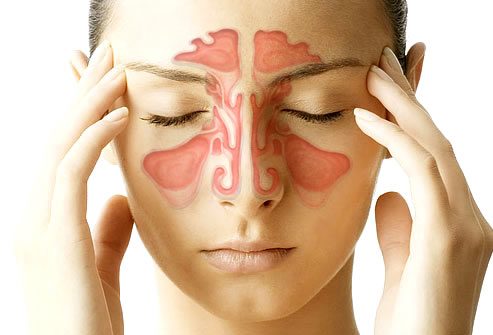
Sinusitis a Very Common Condition
Sinusitis a Very Common Condition
Sinusitis is the inflammation of the mucous membranes lining the paranasal sinuses. These small hollows full of air are divided into three sections:
- frontal sinuses — located above the nose, in the frontal part of the skull
- ethmoid sinuses — in the sides of the nose
- maxillary sinuses — in the cheeks
Normally, air passes through the sinuses without problems. But when these spaces are blocked, people with sinusitis can suffer discomfort and difficulties breathing.
This pathology is very common in the general population and can present with a wide variety of symptoms, sometimes having an important impact on quality of life. The main cause of sinusitis are infections, either viral (the most frequent), bacterial or fungal. Allergies are another possible cause.
Factors that predispose us to sinusitis are:
- Climate variations — cold seasons and the increase in humidity
- Tobacco — both being an active smoker and being exposed to smoke
- Environmental or occupational exposures to pollution and irritants
- Individual anatomical variations (nasal septum deviations and nasal polyps)
- Allergies
- Weak immune system
- Enlarged adenoids
- Exposure to forces such as gravity and pressure — flying, diving, mountaineering, etc.
The main symptoms of this disease are:
- Pain and pressure behind the eyes and in the maxillofacial area
- Secretion and nasal congestion
- Partial or total loss of the sense of smell
- Fatigue and general malaise
- Headache
- Fever
- Sore throat and drip between the nose and pharynx
- Cough, which tends to get worse at night
Treatment of sinusitis is based mainly on symptomatic relief. Analgesia in cases of pain, nasal washes with saline solutions (using a Netipot) or nasal decongestants may be useful. Although in most cases these treatments do not change the course of the disease, symptoms may improve. Systemic antibiotics are recommended in patients with acute sinusitis and risk factors such as fever, purulent mucus and unilateral pain on suspicion of bacterial superinfection.
In the case of chronic sinusitis, treatment is based mainly on intranasal corticosteroids. Nasal washes with saline solutions improve the treatment effect by removing the mucous that covers the nasal mucosa. In cases of exacerbations, systemic corticosteroid regimens and short courses of systemic antibiotics are usually necessary. In other cases, long courses of antibiotics have also shown benefit.
If the condition persists after proper medical treatment, patients could benefit from surgery with the aim of widening the openings and draining the sinuses.
Self-care can also help reduce sinus congestion. The following are recommended to reduce symptoms:
- Drink plenty of fluids to dilute secretions
- Inhale steam two to four times a day
- Use a humidifier to reduce environmental dryness
- Apply hot, damp cloths to the face several times a day
- Use nasal decongestants
